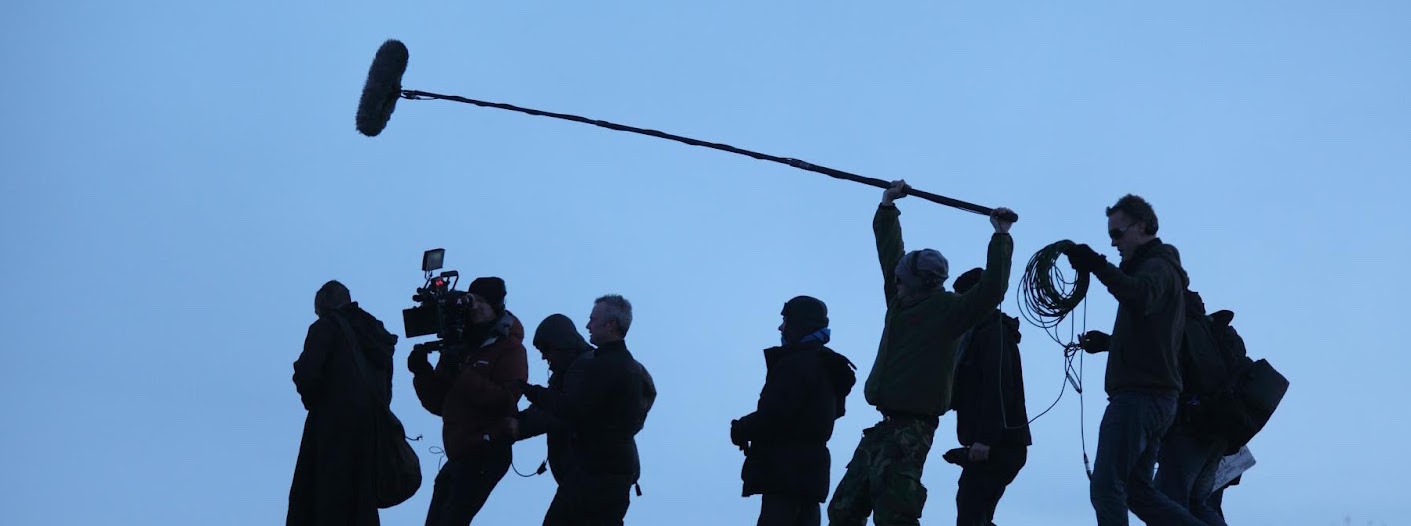Location Sound
Location sound is an art in which the location recordist (production mixer) tries to record dialogue as cleanly and crisply as possible, with little background noise (a high signal-to-noise ratio). It also involves a boom operator, who usually suspends the microphone above and in front of the actor speaking, and gets as close as possible without letting the microphone or its shadow enter the frame. An alternative to the overhead boom is a hidden lavalier mike on the actor’s chest, which is either connected to the recorder via cables or wired to a small radio transmitter also hidden on the actor. Despite all of this highly specialised techniques, location sound depends on a host of factors.
Determinants of Location Sound
Beginning with the weather and the cloud cover to ambience sound from the surroundings— whether it is from hawkers, trains, vehicles, curious onlookers or more— interference issues when it comes to location sound are too many to name. Not just that, the buildings/streets where the shoot is taking place need to be cleared out, necessary permits issued and people and neighbours paid for a day’s work or more— depending on how long the shoot takes, so that there is quiet and the sound can be controlled. Furthermore, sound recordists, boom operators and sound assistants need to be hired to operate the sound gear, look after equipment and set up everything so that the sound recorded is optimal. If the shoot is in a place that is particularly hot or cold, heaters, setting up shade using tents and even fans and portable air conditioner units might need to be used.
Sound in Post-Production
After the film shoot and during post-production, the first stage of sound editing is called “spotting,” where the editors and possibly the director go through every second of the film with the supervising sound editor in order to generate a list of every sound that needs to be added, augmented, or replaced. Though this is usually a time-consuming process, directors typically prefer production dialogue, which is an integral part of the actors’ performances, to looping (rerecording speech in post-production), since it is almost impossible to recreate all the conditions of the shoot in the studio.
The Role of Foley Artists
Foley artists recreate realistic ambient sounds in the film. Named after Jack Foley, the technique involves Foley artists on a stage in a specialised Foley studio performing the sounds. However, these days most of the everyday sounds are done without Foley artists because the sound effects are stored electronically and performed by the post production sound engineer on a keyboard while watching the visuals. Ranging from footsteps and a slammed door to breaking glass, this work is crucial because the work of the best Foley artists remains unnoticed by the audience. It is their that brings the film’s auditory experience alive. They also cover up unwanted sounds captured on the set of a movie during filming, such as overflying airplanes or passing traffic.
Consider the case of the movie Forrest Gump. According to Randy Thom, sound designer for the film, almost none of the sound recorded while the film was being shot found its way into the final cut of the movie. This is because the audio quality was not good enough. What typically happens in this case is that actors return to a studio to re-read their lines and dialogue is synchronized using a process called automated dialogue replacement (ADR). Unfortunately, this increases the budget of the film considerably.
Pros & Cons of Studio Sound
While studios instantly solve the issue of not being able to control the environment and quality of sound, the downsides to studio sound is that the studio will have to be rented and sets have to be constructed and outdoors are not very easy to replicate in a studio. Studios save a lot of time and there is a lot of effort that gets saved because it cuts out all the numerous factors that recording on location brings with it. When the cost of hiring a crew is considered, saving time translates to saving money. So while building sets might involve a portion of the budget, the time involved might be considerably lesser.A crucial difference between visual and aural manipulation of the audience is that even sophisticated audiences rarely notice the soundtrack and it can therefore subconsciously affect the audience. In a film like Hitchcock’s The Birds, for instance, any time a bird was shown, the audience knew that they were being titillated. By occasionally, adding a single “caw” to the soundtrack, Hitchcock was able to dramatically increase the tension without the audience being aware of how they were being manipulated using sound.

